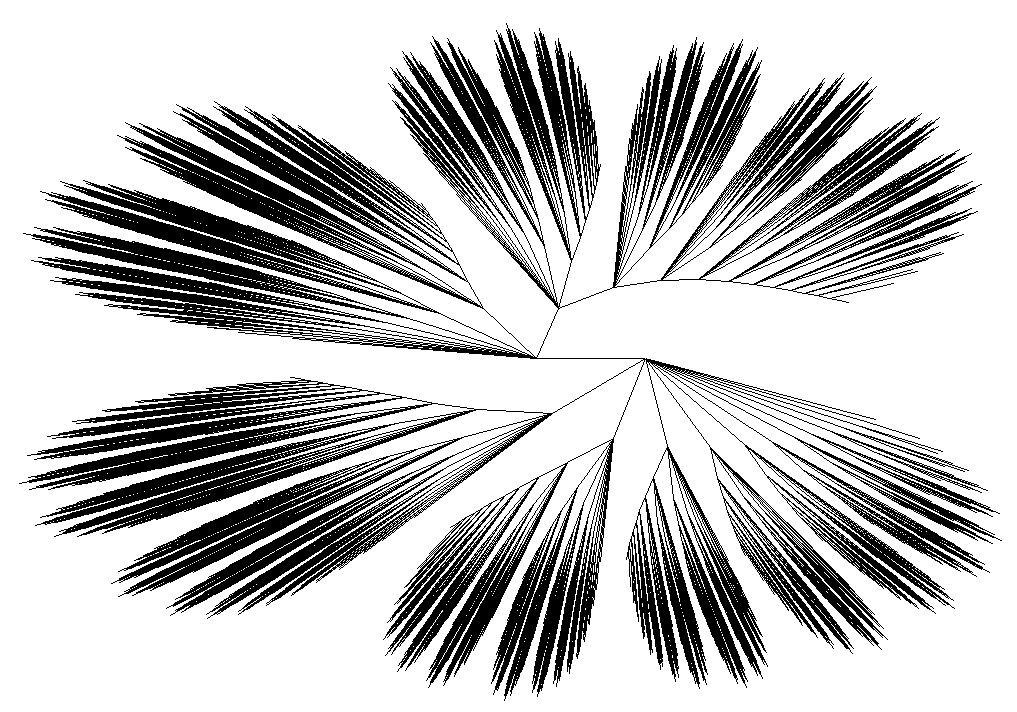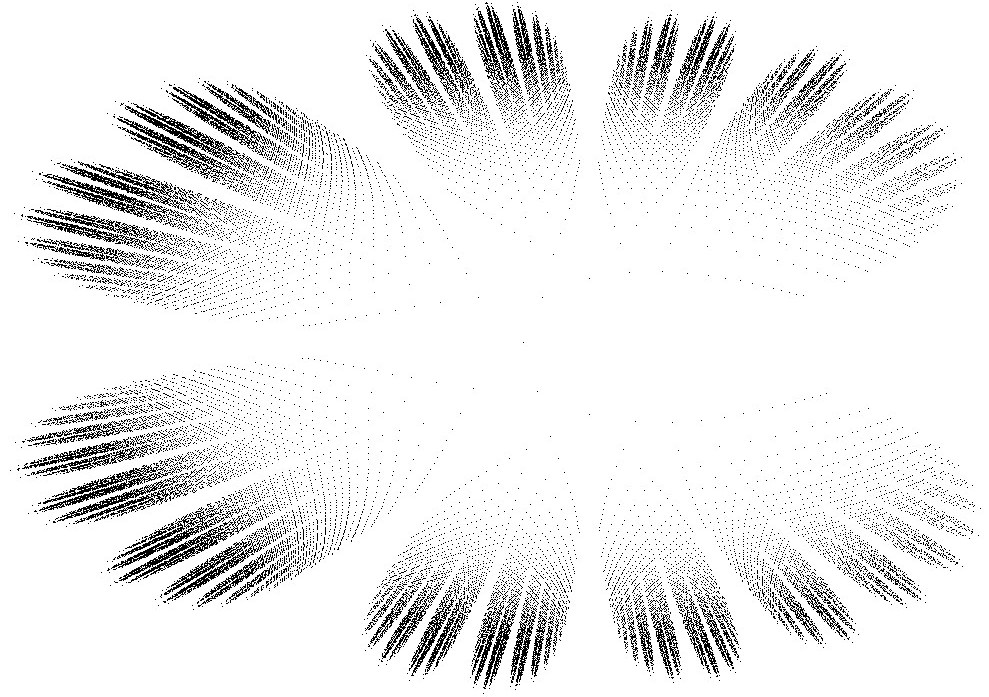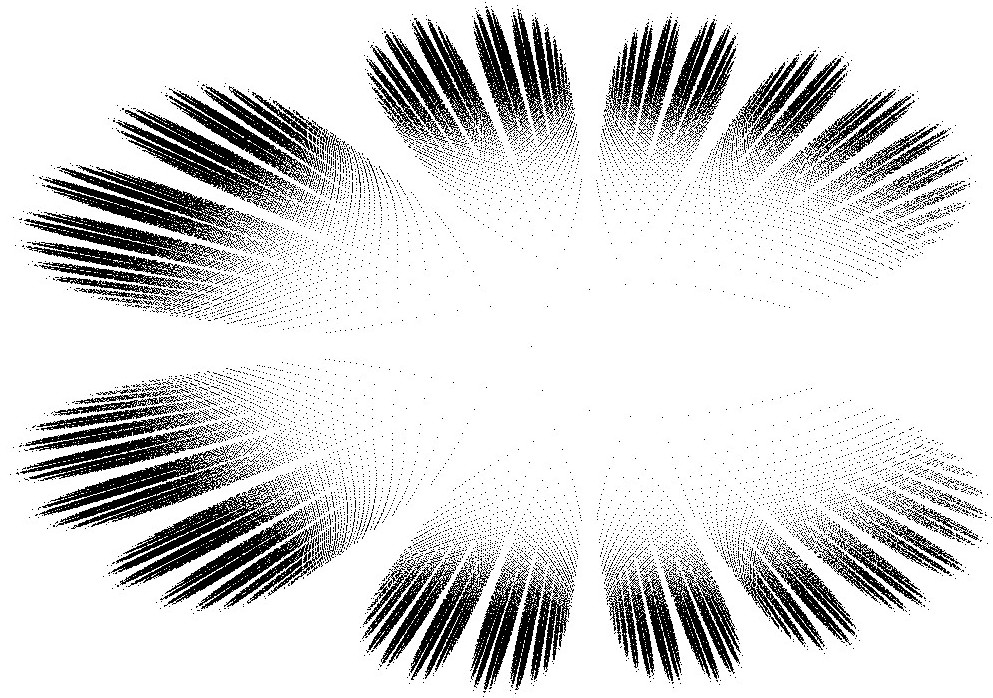These are based on Farey sequences, (well, more properly, the left half ![]() of the Stern-Brocot tree) drawn in the positive x-y plane between
of the Stern-Brocot tree) drawn in the positive x-y plane between ![]() and
and ![]() , and expanded (i.e. by 8) anti-clockwise around the origin so that the fraction value
, and expanded (i.e. by 8) anti-clockwise around the origin so that the fraction value ![]() is represented as
is represented as ![]() radians, i.e. in
radians, i.e. in ![]() (from 3 o’clock anticlockwise around to 3, in clock-speak).
(from 3 o’clock anticlockwise around to 3, in clock-speak).
Each new row of the Stern-Brocot tree is made from the previous one by putting a new fraction between each pair, adding together the numerators and denominators (i.e. top and bottom) to get the new values, i.e.
![]()
Continuing on in this way, the set will contain every fraction between 0 and 1, and all in lowest terms! (i.e. never ![]() or
or ![]() etc)
etc)
It has many amazing properties and applications, but strangely was not described until the 19th C.
The big gap on the middle left hand side is the region of ![]() , and then gaps clockwise around from there, each one smaller, are
, and then gaps clockwise around from there, each one smaller, are ![]() ,
, ![]() ,
, ![]() ,
, ![]() ,
, ![]() , etc. The ones on the underside are, from left,
, etc. The ones on the underside are, from left, ![]() ,
, ![]() ,
, ![]() ,
, ![]() ,
, ![]() etc.
etc.




